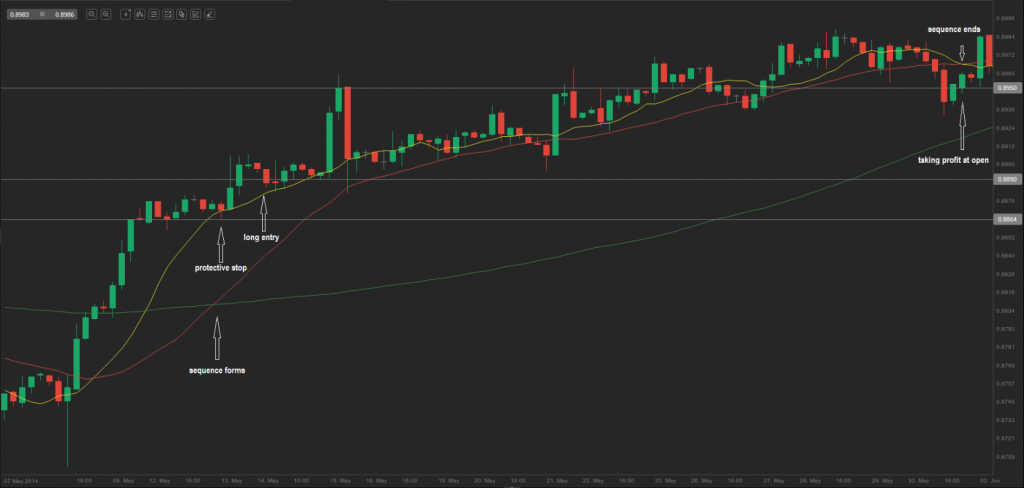Sequence of moving averages (swing trading strategy)
This lesson will cover the following
- A quick overview
- Steps a trader needs to follow for this strategy
When we say a sequence of moving averages, we mean a situation when, for instance, during a bull trend the 10-day Simple Moving Average (SMA) is at a higher price compared to the 25-day SMA, which is at a higher price in comparison with the 50-day SMA. If we also place a 100-day and a 200-day SMA, then the 100-day moving average should be at a lower price than the 50-day SMA, while the 200-day moving average should be at a lower price compared to the 100-day SMA. During a bear trend the order of moving averages will be just the opposite – the 10-day SMA should be at the lowest price level and the 200-day SMA should be at the highest price level. This sequence of the moving averages indicates that the market is trending, while each moving average can actually be used as a level of support. In addition to the sequence, a trader needs to pay attention to the ADX reading (whether it is above 20 or not and whether it is in an uptrend or not).
Entry and exit points, using this trading approach, are hard to determine, but a trader will usually prefer to keep his/her position active as long as the above mentioned sequence of moving averages is still present and close this position as soon as the sequence is disrupted. A trader will usually attempt to detect and take advantage of this sequence, when it occurs for the first time, as it is not a situation that common.
What does a trader need to do?
As with any other trading approach, there are certain steps to be followed:
The trader needs to spot a currency pair with its moving averages showing this sequence;
The trader needs to pay attention to the ADX – whether it is trending up and whether its reading is above 20;
The trader should enter a long position five candles after the sequence of moving averages initially appears and is still present;
Long-positioned traders should place their protective stop at the low of the day, when the initial crossover appears, while short-positioned traders should place it at the high of the same day;
The trader needs to close his/her position, if the sequence is no longer present.
Example
Let us take a look at the 4-hour chart of USD/CHF. On May 13th the 10-day SMA (yellow), the 25-day SMA (red) and the 100-day SMA (green) formed a sequence. Our long entry is five candles after the order formation at a price of 0.8890. Our protective stop is placed at the low of May 13th, or 0.8864. As the pair continues its bull trend, we exit our position when the sequence is no longer present (when the 10-day SMA crosses below the 25-day SMA, which occurs on June 2nd). The pair opens at 0.8950 on that day, which provides us with a profit of 60 pips, while risking 26 pips on this trade.
